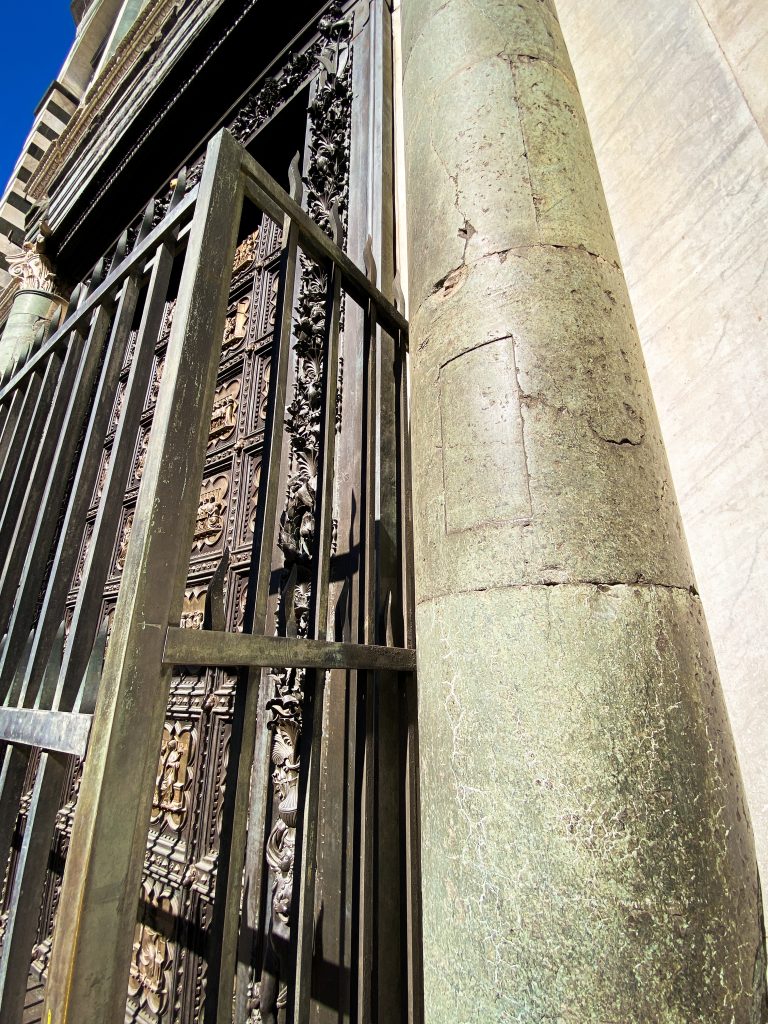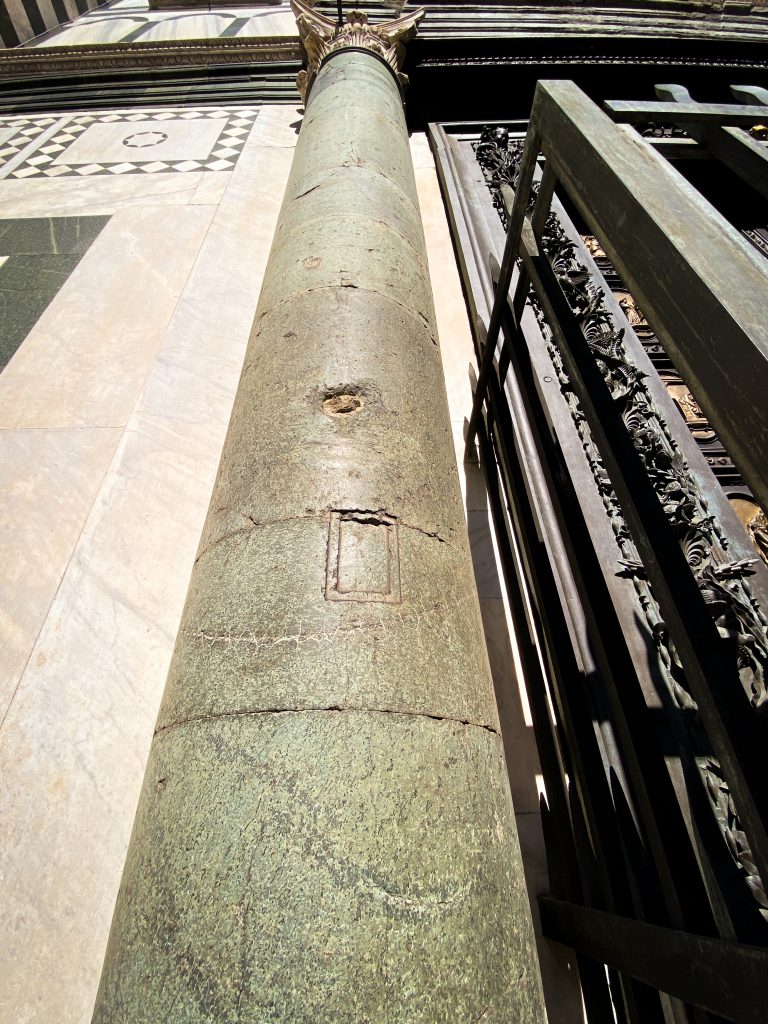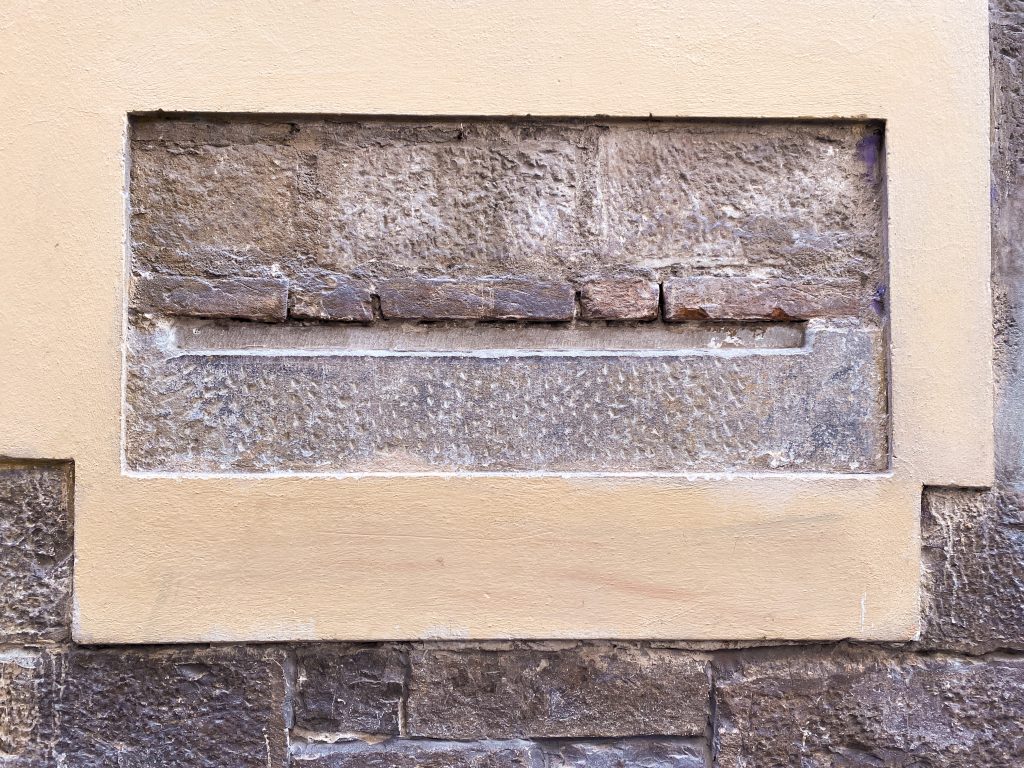Strange marks in Florence
I had actually seen these signs before but didn’t think they were related to this context.
Often, along the walls of a religious building, such as that of the Florence Baptistery you can find spolia (i.e., the reuse of architectural or decorative elements from Roman times) or the famous and mysterious magic square, the Sator.
Indeed, the symbols I have seen on the columns flanking the South Gate of the baptistery are rectangular! But no, these are no magic squares nor even esotericism but simple but fascinating traces of medieval life in the city.

Reading the information on the Florence OPA website I saw that there is also another one, not far from the baptistery, on Via dei Cerchi, but this time it is not a square but a long groove.
Let’s cut to the chase: these are nothing more than units of measurement adopted from the Middle Ages and used until the mid-nineteenth century.
They were placed or engraved on the walls of buildings so that they were accessible to all.
They served to avoid disputes during a purchase or sale: just think of the fragmented nature of our country before Unification of Italy (1861) and we can assume the different units of measurement adopted in each municipality, region, etc. In short, one could easily be mistaken…and take advantage of it!

But let’s go in order. The first rectangle, on the column to the right of the Baptistery portal, is called the “Foot of Liutprand,” Lombard king from 712 to 744.
Apparently, the king, traveling through the Milan territory, learned of the many frauds causing many disputes during the sale or purchase of a product.
Then the king thought to place his foot on a stone slab leaving his footprint whose measurement would become the official one for trade.
Over the centuries the value of Liutprand’s Foot ranged from 154,33 inches to 21.41 inches, a huge measurement if you think about it, for a foot in fact, not surprisingly, the legend was born that lasted for centuries that Liutprand was a giant!
The beauty of this story is that in 1895, in Pavia, they found the remains of the Lombard king. Apparently he was 68,11 inches tall and his feet measured 10 inches, the left one and, 10,27 inches, the right one. The sum of these is 20,27 inches. I would say that fits!

After Liutprand’s foot, the “Florentine Foot” is introduced. We find it on the other column, the one to the left of the portal. It is a smaller rectangle (after all, Florentines do not have the sole of the foot as long as the taller northern Europeans!).
From the thirteenth century onward, however, the “arm” Unit of Measurement was introduced, coming from Palestine. It is said to have been introduced by the Crusaders but perhaps, more likely, by Pisan merchants. It is around 60 cm. The one in Florence, that is, the one in Via dei Cerchi, measures 22,96 inches.
It is a long groove, carved into the wall. Perhaps it was once filled with a bronze graduated bar.
In Florence, in addition to the “foot” and “arm” there were units of measurement such as the “cane” (114,96 inches) and they were posted on the facades of main and municipal buildings for public use.
Then, in France, in 1791, the meter was introduced as the unit of measurement that we, the newly formed Kingdom of Italy, would not adopt until July 28, 1861.